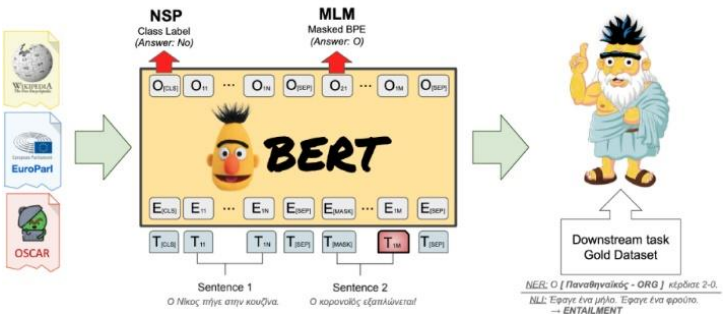Emotion Detection with Pre-Trained Language Models BERT and ELECTRA Analysis of Turkish Data
DOI:
https://doi.org/10.58190/imiens.2024.82Keywords:
BERT, ELECTRA, Language Models, Transformer, Turkish Sentiment AnalysisAbstract
Developments in artificial intelligence have led to positive developments in many fields. Sentiment analysis, one of these areas, has become more applicable with the models and architectures developed. In this study, emotion detection and emotion analysis were performed on the transcribed data of Turkish voice recordings. In the emotion detection phase, after the emotional states (positive, negative, neutral) of the data were detected with BERT and ELECTRA models, which are transformer-based structures, machine learning algorithms were used in the accuracy analysis of these emotional states and the Google Colaboratory platform was used in the application phase. Naive Bayes, Random Forest, Support Vector Machine and Logistic Regression algorithms were used in the accuracy analysis. As a result of the study, both Naive Bayes and Logistic Regression algorithms achieved the best accuracy rate in emotion detection with the BERT model with a rate of 70%. In emotion detection with the ELECTRA model, both Random Forest and Logistic Regression algorithms achieved the best accuracy rate of 72%. BERT and ELECTRA methods are used to provide a better understanding of understanding and classification of emotional content in Turkish texts and contribute to the development of sentiment analysis-based applications. In addition, two Turkish emotion data sets were obtained, and by using more than one method in emotion analysis, our study has been a unique study in the field, allowing the analysis of the study to be done more effectively.
Downloads
References
A. Murarka, K. Shivarkar, V. Gupta, P. Sankpal, IJARCCE Sentiment Analysis of Speech,” Int. J. Adv. Res. Comput. Commun. Eng. ISO, vol. 3297, no. 11, 2007.
M. H. R. Pereira, F. L. C. Pádua, A. C. M. Pereira, F. Benevenuto, D. H. Dalip, Fusing Audio, Textual and Visual Features for Sentiment Analysis of News Videos, Proc. 10th Int. Conf. Web Soc. Media, ICWSM 2016, pp. 659–662, Apr. 2016.
A. Demir, O. Atila, A. Sengur, Deep Learning and Audio Based Emotion Recognition, Sep. 2019.
K. M. Kudiri, A. M. Said, M. Y. Nayan, Emotion detection using average relative amplitude features through speech, Proceedings - 2012 IEEE International Conference on Control System, Computing and Engineering, pp. 115–118,2012.
A. A. A. Zamil, S. Hasan, S. M. Jannatul Baki, J. M. Adam, I. Zaman,Emotion detection from speech signals using voting mechanism on classifiedframes, 1st International Conference on Robotics, Electrical and Signal Processing Techniques, ICREST 2019, pp. 281–285, Feb. 2019.
U. Garg, S. Agarwal, S. Gupta, R. Dutt, D. Singh, Prediction of Emotions from the Audio Speech Signals using MFCC, MEL and Chroma, 2020.
M. R. Amer, B. Siddiquie, C. Richey, A. Divakaran, Emotion detection in speech using deep networks, ICASSP, IEEE International Conference on Acoustics, Speech and Signal Processing - Proceedings, pp. 3724–3728, 2014.
J. Bhaskar, Sruthi K, P. Nedungadi, Hybrid Approach For Emotion Classification Of Audio Conversation Based On Text and Speech Mining, 2015.
F. D. Tayşi, Konuşma Verisinden Duygu Durum Tespiti, 2019.
S. Cunningham, H.Ridley, J. Weinel, and R. Picking, Supervised machine learning for audio emotion recognition: Enhancing film sound design using audio features, regression models and artificial neural networks, Pers. Ubiquitous Comput Apr. 2020.
A. Davletcharova, S. Sugathan, B. Abraham, A. P. Jame, Detection and analysis of emotion from speech signals, 2015.
Z.A.Güven, Türkçe Ürün Yorumları için BERT, ELECTRA ve ALBERT Dil Modellerinin Duygu Analizine Etkisi, 2021.
U. Açıkalın, B. Bardak, M. Kutlu, BERT Modeli ile Türkçe Duygu Analizi, 2020.
Z.A.Güven, The Comparison of Language Models with a Novel Text Filtering Approach for Turkish Sentiment Analysis,2022.
Ö.Y. Yürütücü, Ş. Demir, Ön Eğitimli Dil Modelleriyle Duygu Analizi, 2023.
M.Demircan, A.Seller, F. Abut, M.F. Akay, Developing Turkish Sentiment Analysis Models using machine learning and e-commerce data, 2021.
J.Devlin, M. Chang, K.Lee, K.Toutanova, BERT: Pre-training of Deep Bidirectional Transformers for Language Understanding, 2019.
Ni S., Kao H., ELECTRA is a Zero-Shot Learner, Too, 2022.
Kevin Clark, Minh-Thang Luong, Quoc V Le, and Christopher D Manning. Electra: Pre-training text encoders as discriminators rather than generators, 2020.
H. Evirgen, M. Çerkezi, Prediction and Diagnosis of Diabetic Retinopathy using Data Mining Technique, 2016.
R. Solmaz, M. Günay, A. Alkan, Fonksiyonel Tiroit Hastalığı Tanısında Naive Bayes Sınıflandırıcının Kullanılması, 2014.
K. Kirasich, T. Smith, B. Sadler, Random Forest vs Logistic Regression: Binary Classification for Heterogeneous Datasets, 2018.
L. He, F. Kong, Z. Shen, Multiclass SVM based land cover classification with multisource data, 2005.
A. D. Kulkarni, B. Lowe, Random Forest Algorithm for Land Cover Classification International Journal on Recent and Innovation Trends in Computing and Communication Random Forest Algorithm for Land Cover Classification, 2016.
D. G. Kleinbaum, M. Klein, Logistic Regression: A Self-Learning Text, Third Edition, Springer 2010.
J. Ramos, TF-IDF to Determine Word Relevance in Document Queries, 2003.

Downloads
Published
Issue
Section
License
Copyright (c) 2024 Intelligent Methods In Engineering Sciences

This work is licensed under a Creative Commons Attribution-ShareAlike 4.0 International License.






